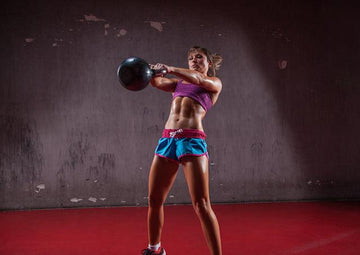

Get Shredded without Hours of Cardio
Table of Contents
Get Shredded without Hours of Cardio
by: Robbie Durand
Want to go from “ripped” to “shredded” with your body fat? It’s very difficult to get into the low body fat extremes when dieting. When researchers measured people with the disorder anorexia, some of the more common health issues that occur are vitamin and mineral deficiencies, fluid and electrolyte imbalances, an increased risk of bone fractures, suppressed immune function, and low reproductive functions. Contrary to what many gym advocates may think, body fat is an important component for our overall health as it serves some very important roles: body fat plays a key metabolic role in the production of energy, it acts as an insulator to help our bodies conserve heat, it helps protect vital organs, and is needed to maintain proper hormonal and reproductive function. Elite bodybuilders can have estimated body fat percentage anywhere from 5-7%, but if you have ever known anyone competing for a show, they can only maintain these low percentages of body fat for a short period of time, as the fatigue that comes from having low body fat is unbelievably hard to maintain for any length of time.

If you are already lean and want to get even leaner, what should the exercise prescription be? According to researchers at East Carolina University, high intensity resistance exercise helps lean men get even leaner. Resistance exercise has been shown to decrease resting respiratory exchange ratio (RER) after exercise indicating elevated post-exercise fat oxidation. It’s well known that catecholamines regulate fat burning in adipose tissue. It’s also why a majority of fat burners on the market use stimulants such as caffeine and synephrine, which can help enhance fat loss. Researchers wanted to compare fat mobilization in both lean and obese men and measure if there was any difference in the metabolic response to resistance exercise. Researchers tested 10 men whose body fat percentage was (~14 percent), and 10 men whose body fat percentage was (38 percent). Both groups did chest-press, lat pull-down, leg-press, shoulder-press, leg-extension, and leg-curl exercises. Each exercise was performed for three total sets: two sets of 10 repetitions and a third set to muscular exhaustion with a load equaling 85% of the individual’s previously established 10RM. Rest periods were kept to 90 seconds between all sets and exercises, and the resistance exercise session lasted for a total of 40 minutes.

The workout was designed to be similar to those from other studies in which plasma catecholamines, anabolic hormones, insulin, and lactate concentrations were significantly affected. Immediately after the workout, the researchers found no difference in the epinephrine or norepinephrine response between groups at rest or with resistance exercise between the lean and obese group, but when the researchers examined the subcutaneous fat of their subjects after training, they noticed that the lean group fat cells released more glycerol. The major findings of this investigation suggest that despite a significant increase in whole body energy expenditure and fat oxidation observed in both sedentary lean and obese men following acute resistance exercise, subcutaneous abdominal adipose tissue lipolysis is blunted during resistance exercise in obese men, whereas the lean men had a greater increase in the subcutaneous abdominal tissue. In conclusion, high-intensity resistance exercise improves whole body energy expenditure and fat oxidation in lean and obese men subjects. However, lean men had a greater increase in subcutaneous abdominal adipose tissue, resistance exercise-induced lipolysis is greater in lean men. The researchers hypothesized that it may be due to the greater increases in growth hormones that was produced by the lean men than enhanced subcutaneous abdominal adipose tissue. The blunted lipolytic response to resistance exercise in obese men subjects could be due to the significantly lower serum GH response to resistance exercise compared with lean subjects.
Ormsbee MJ, Choi MD, Medlin JK, Geyer GH, Trantham LH, Dubis GS, Hickner RC. Regulation of fat metabolism during resistance exercise in sedentary lean and obese men. J Appl Physiol (1985). 2009 May;106(5):1529-37.
Arner P, Kriegholm E, Engfeldt P, Bolinder J. Adrenergic regulation of lipolysis in situ at rest and during exercise. J Clin Invest 85: 893–898, 1990.
Binzen C, Swan P, Manore M. Postexercise oxygen consumption and substrate use after resistance exercise in women. Med Sci Sports Exerc 33: 932–938, 2001.
Chatzinikolaou A, Fatouros I, Petridou A, Jamurtas A, Avloniti A, Douroudos I, Mastorakos G, Lazaropoulou C, Tournis S, Mitrakou A, Mougios V. Adipose tissue lipolysis is upregulated in lean and obese men during acute resistance exercise. Diabetes Care 31: 1397–1399, 2008.
Gillette C, Bullough R, Melby C. Postexercise energy expenditure in response to acute aerobic or resistive exercise. Int J Sport Nutr 4: 347–360, 1994.Jansson PA, Larsson A, Smith U, Lonnroth P. Glycerol production in subcutaneous adipose tissue in lean and obese humans. J Clin Invest 89: 1610–1617, 1992.

















